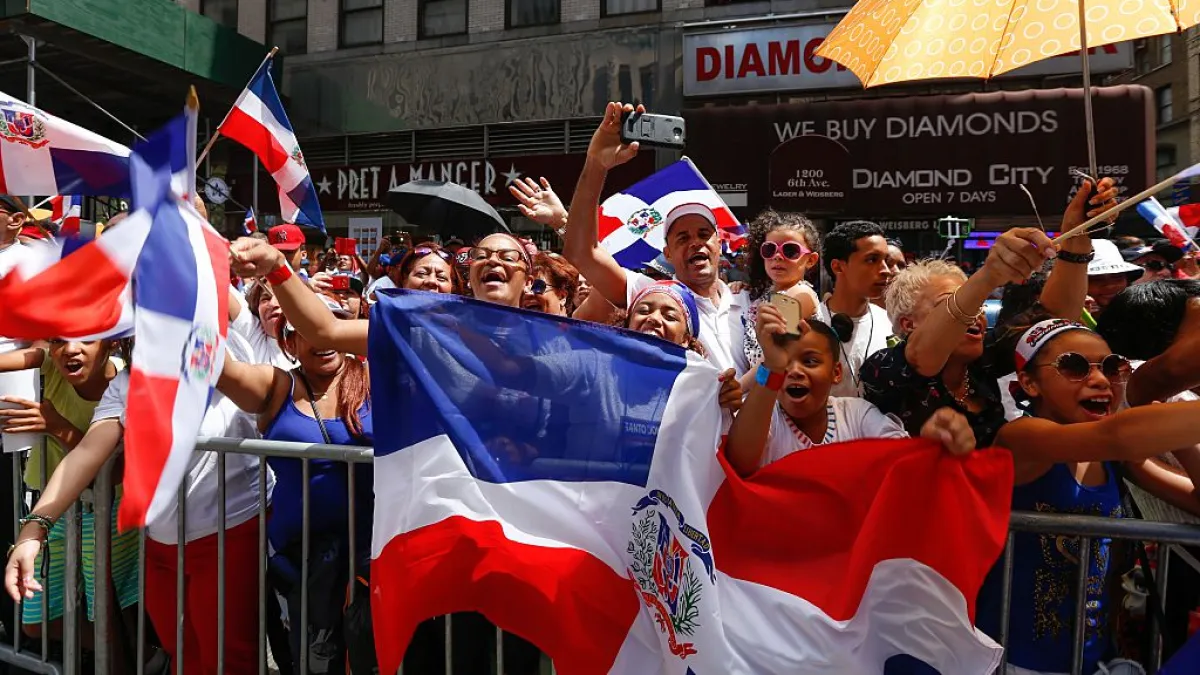NEW YORK.- There are few immigrant communities in New York that have experienced more spectacular growth than the Dominican, which currently sum 892,000 people, an impressive figure when you think that the inhabitants of the Caribbean island are 11.1 million and their “diaspora” are three million.
«We are already 10% of the city of New York, and we are going for 11%“, the Dominican consul Eligio Jáquez tells EFE in his office next to Times Square, in the midst of the incessant movement of a consulate where thousands of people come every day to carry out all kinds of procedures.
The strength of the Dominican community, which in ten years has grown by 30%, can be measured in many ways: 3,200 New York police officers are of Dominican origin, as well as 249 directors of public schools, 24 judges, or six councilors from the powerful Mayor’s Office New York, all in the public sector.
Even more striking is its presence and activity in the private sector: 52,000 taxi drivers, 20,000 bodegas spread throughout the city, 542 supermarkets, hundreds of hairdressers… Dominicans are by far the most active and visible Latino community in the city, even more than the long-standing Puerto Ricans or the Mexicans, the last to arrive in force in New York.
NATIONAL PREFERENCE
Consul Jáquez underlines the attachment of Dominicans to their identity, and gives several easily verifiable examples: baseball (national sport) or bachata, merengue or denbow music are omnipresent on weekends in all public parks in northern Manhattan , where entire families share endless grills while Juan Luis Guerra or Tokischa sound at full speed, depending on taste.
This area of the city located at the northern end of the island is known as the “Little Dominican Republic”, but unlike “Little Italy” -where the only Italian thing is the restaurants-, here one can believe that one is in the heart of Santo Sunday if it weren’t for the absent palm trees.
At dusk and since spring arrives, the residents take tables and chairs out onto the street and start playing dominoes, giving the entire neighborhood an unmistakably Latin air.
“The truth is, here we can ‘live in Dominican’ -says Yeison, a 45-year-old hairdresser-: we have our supermarkets, our bars and restaurants, our doctors and dentists, our lawyers… even the United Palace (historic concert hall in the north Manhattan) is ours,” he jokes.
Yeison is a hairdresser at a salon on the Upper West Side, where all the workers – men and women – are also Dominican. Very close to there, a supermarket belonging to the KeyFoods chain has the same peculiarity: all the cashiers, butchers and managers are Dominicans.
Although it is delicate to speak of “positive discrimination” in a city so attentive to these issues, it is clear that business management favors compatriots. The consul explains it like this: according to him, the national preference is explained because Dominicans show perseverance in work and attachment to their own identity, which they do not lose even after the passing of the years.
As an example, he details the case of remittances: of the 3 million Dominicans abroad, more than half (1.6 million) last year sent 9.8 billion dollars to their relatives in the country, which represented a 9 % of the country’s GDP.
ABINADER’S SUPPORT
It is no coincidence that the president of the country, Luis Abinader, wanted to have a gesture with the Dominicans of New York, and on Sunday, August 13, he will attend the massive Dominican Parade that will run for several hours along Sixth Avenue.
Abinader, a very probable candidate for re-election, knows that in this huge New York community of compatriots, many votes can be at stake, so he will share the limelight with the urban singer Nati Natasha, queen of the parade.
One day Abinader may have, like his predecessor Juan Pablo Duarte, a street named after him in New York. There are “Dominican” streets dedicated to baseball players, journalists, singers and political activists.
Or Calle Juan Rodríguez, the famous Dominican who was the first immigrant in the history of New York: fled in 1613 from a Dutch merchant ship, where he was probably held captive on the galleys, he was the first “foreigner” to meet the native Lenape , before the arrival of the white men.
Few can boast of having a presence of four centuries in the Big Apple. Dominicans, yes.


